Archive
2020
KubaParis
Le Peep-Show



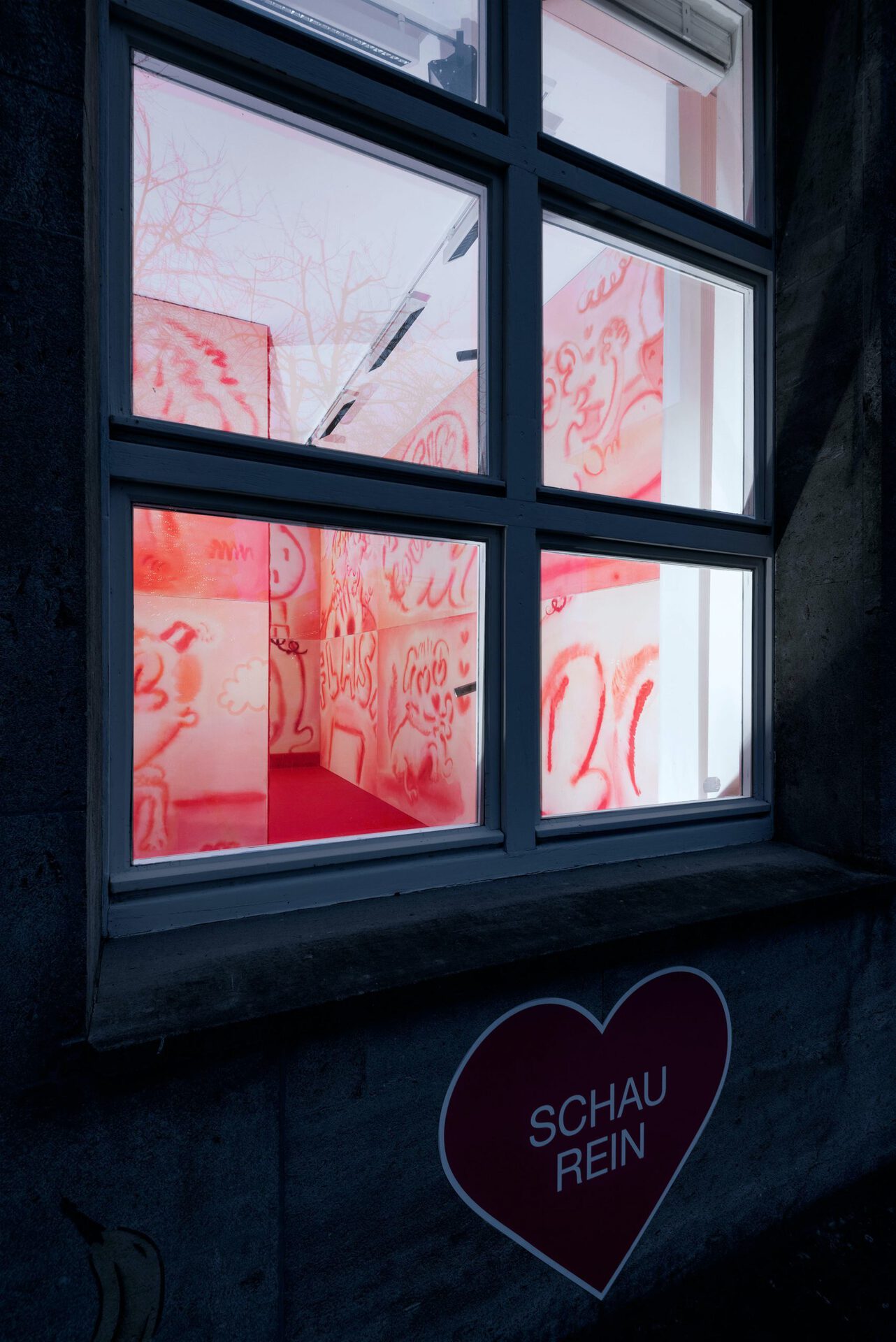
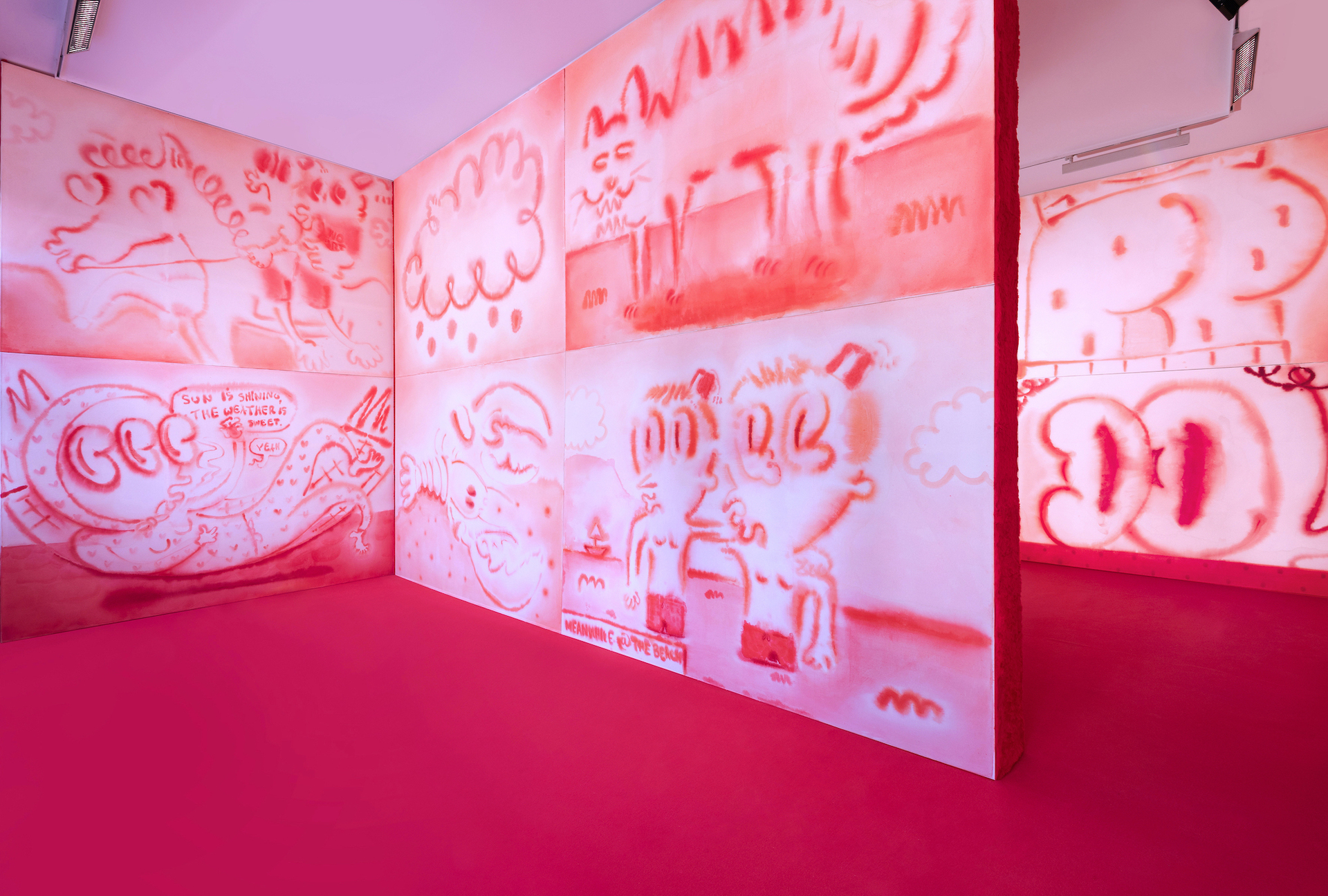
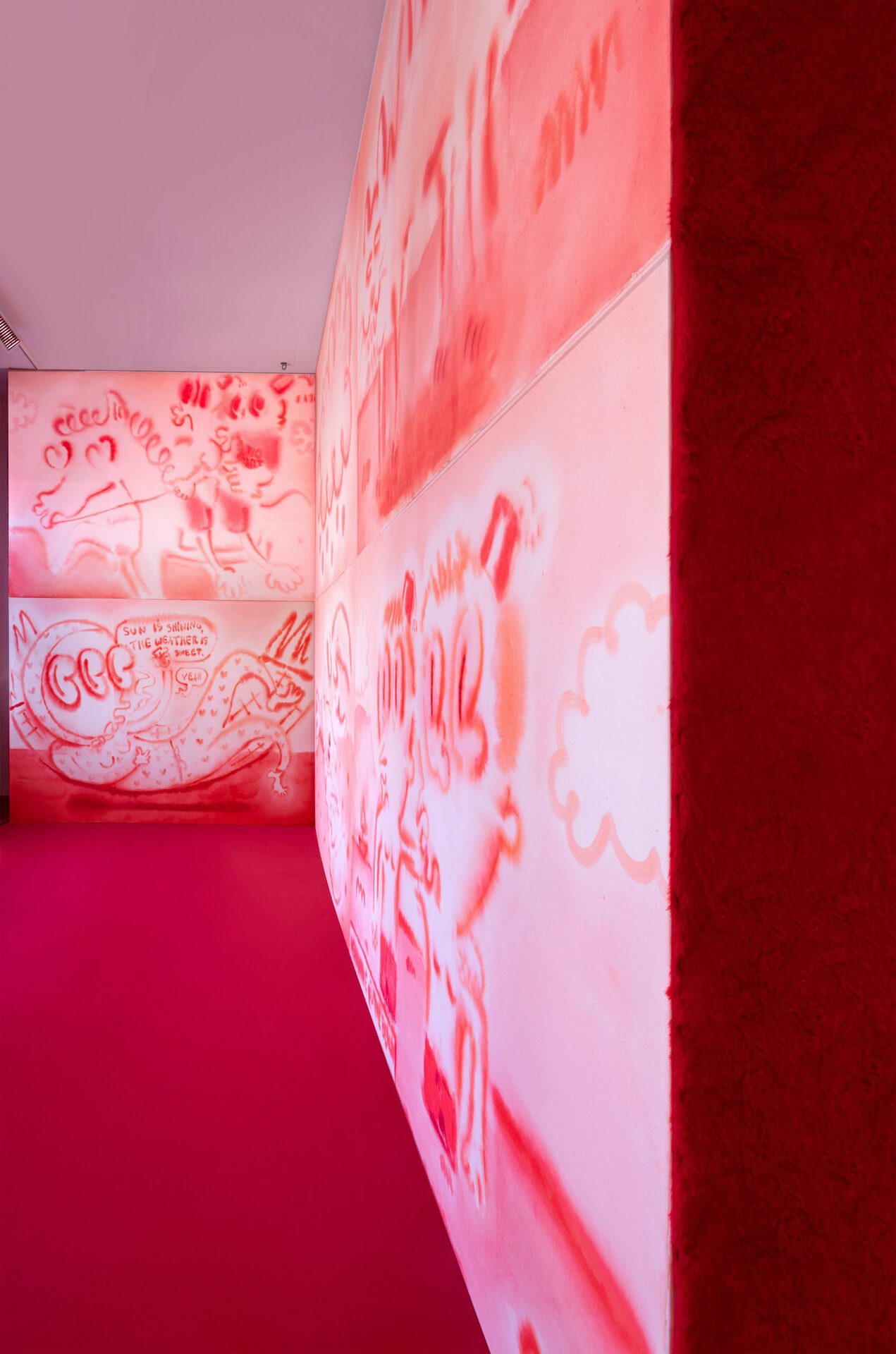
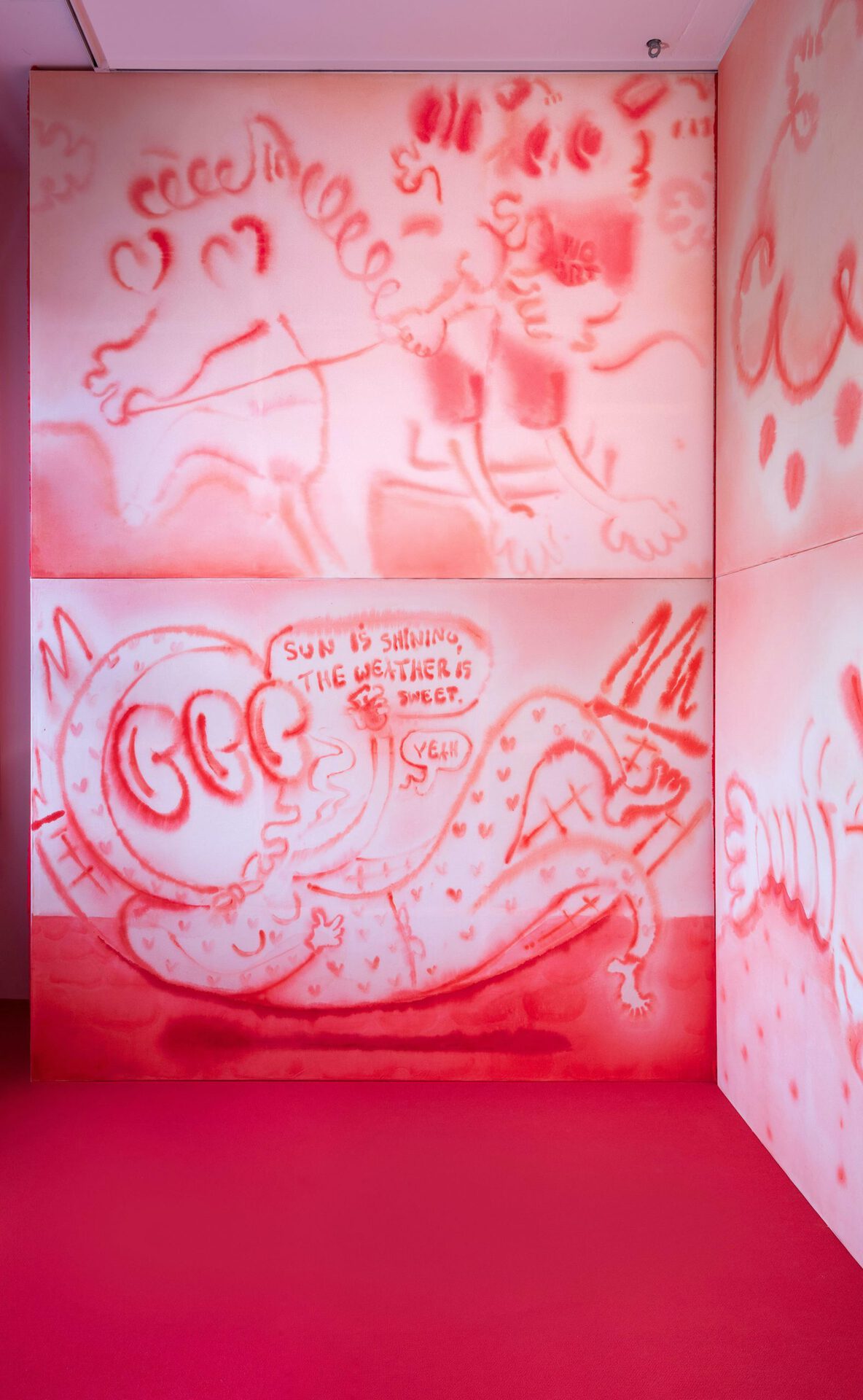
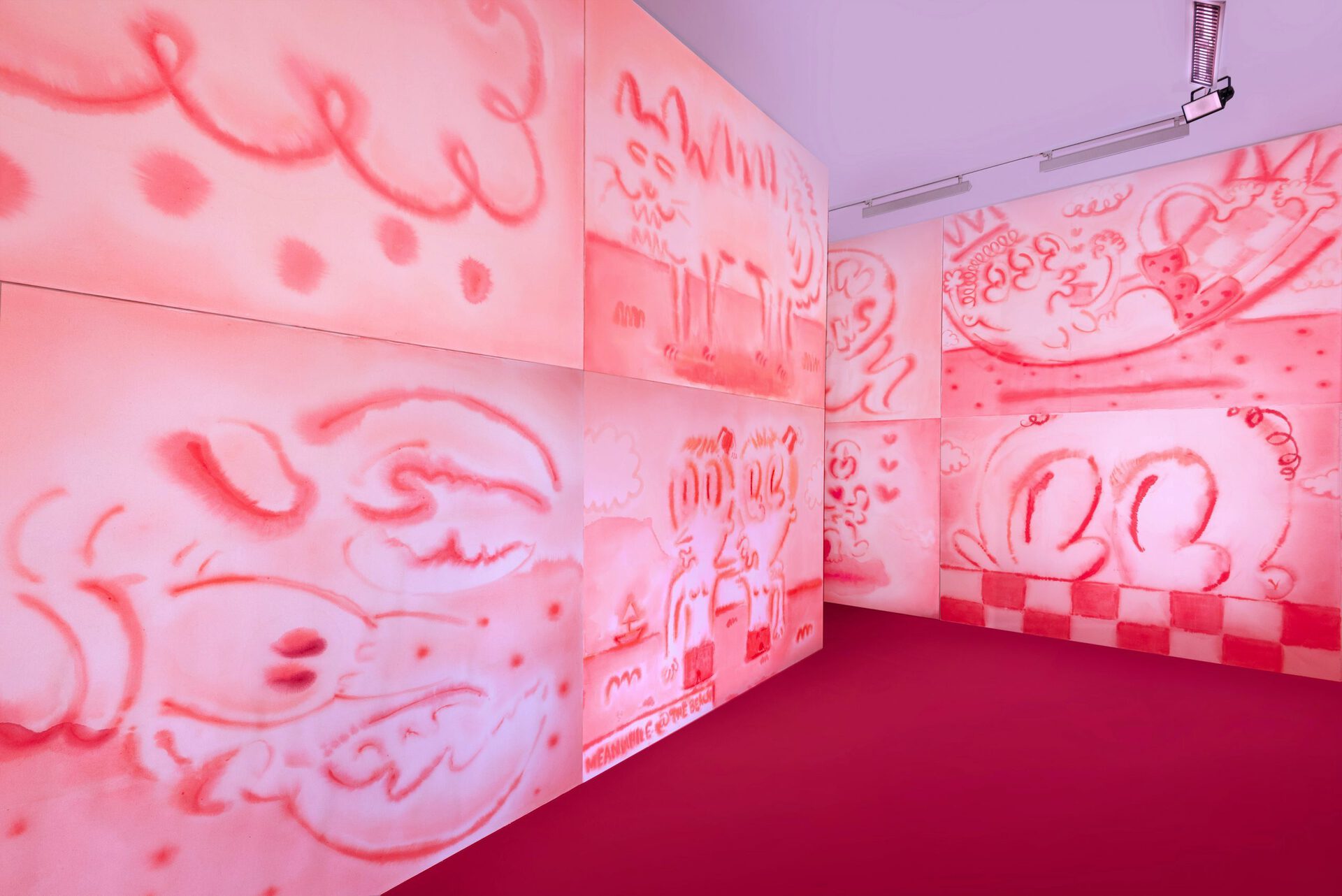


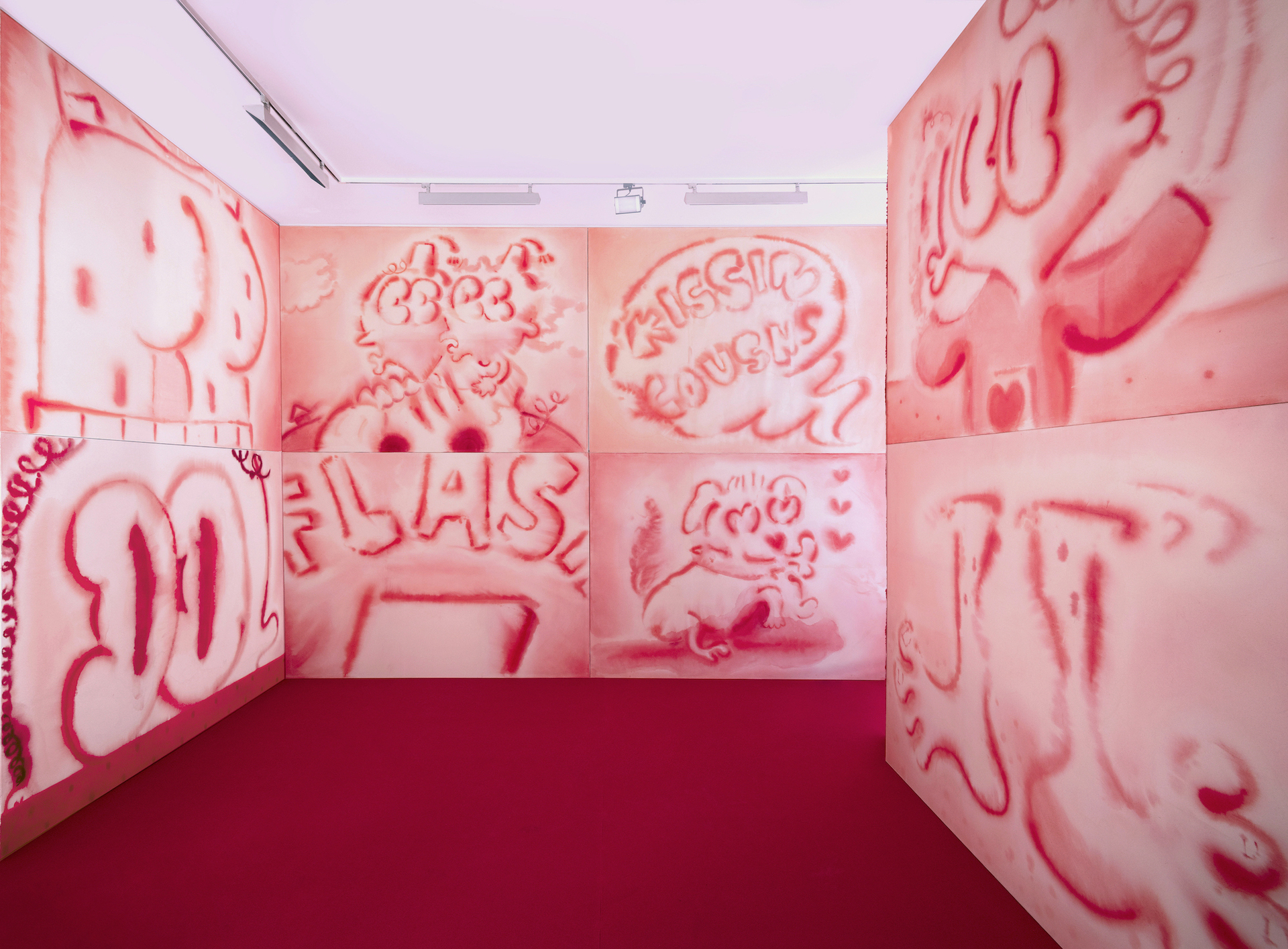

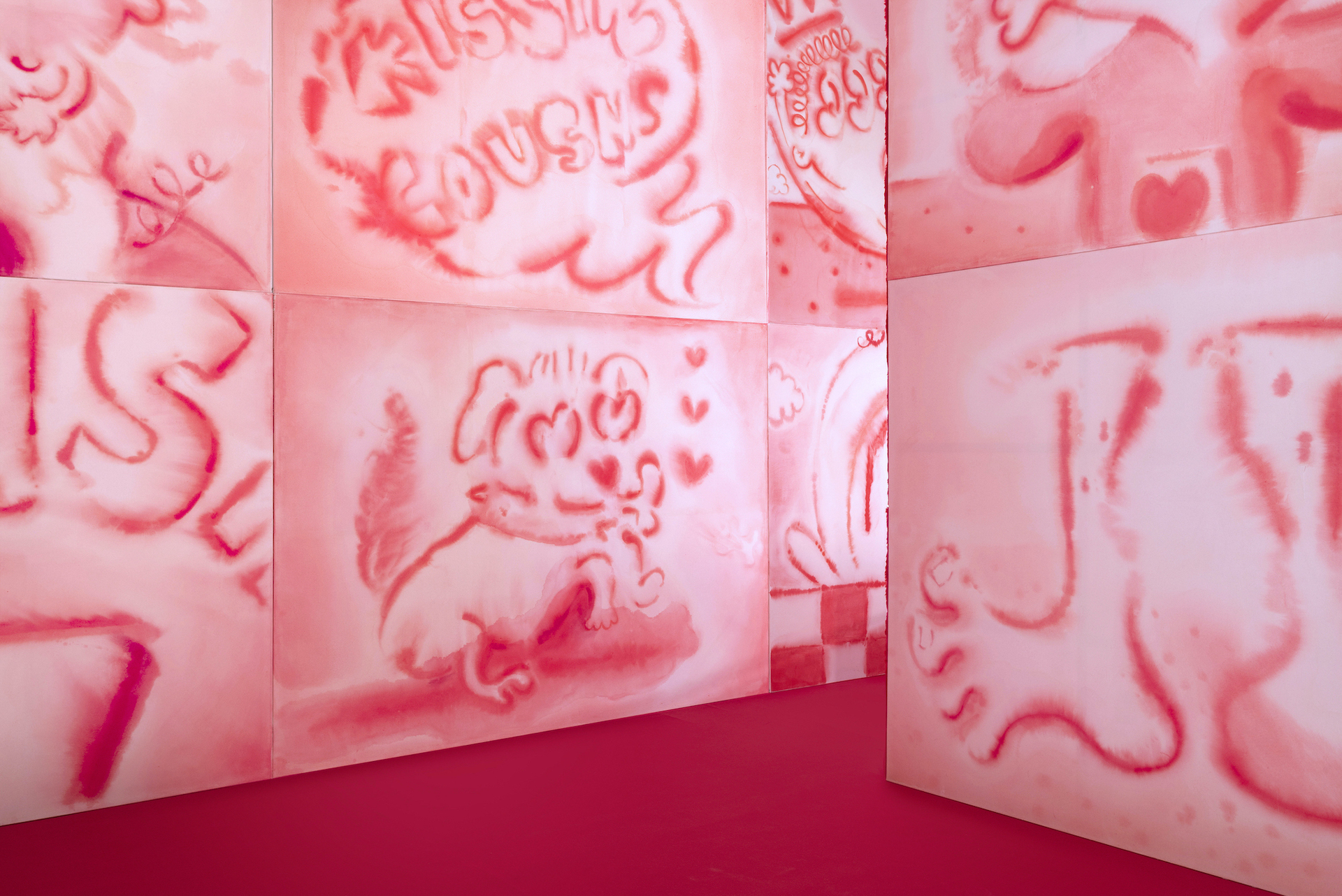
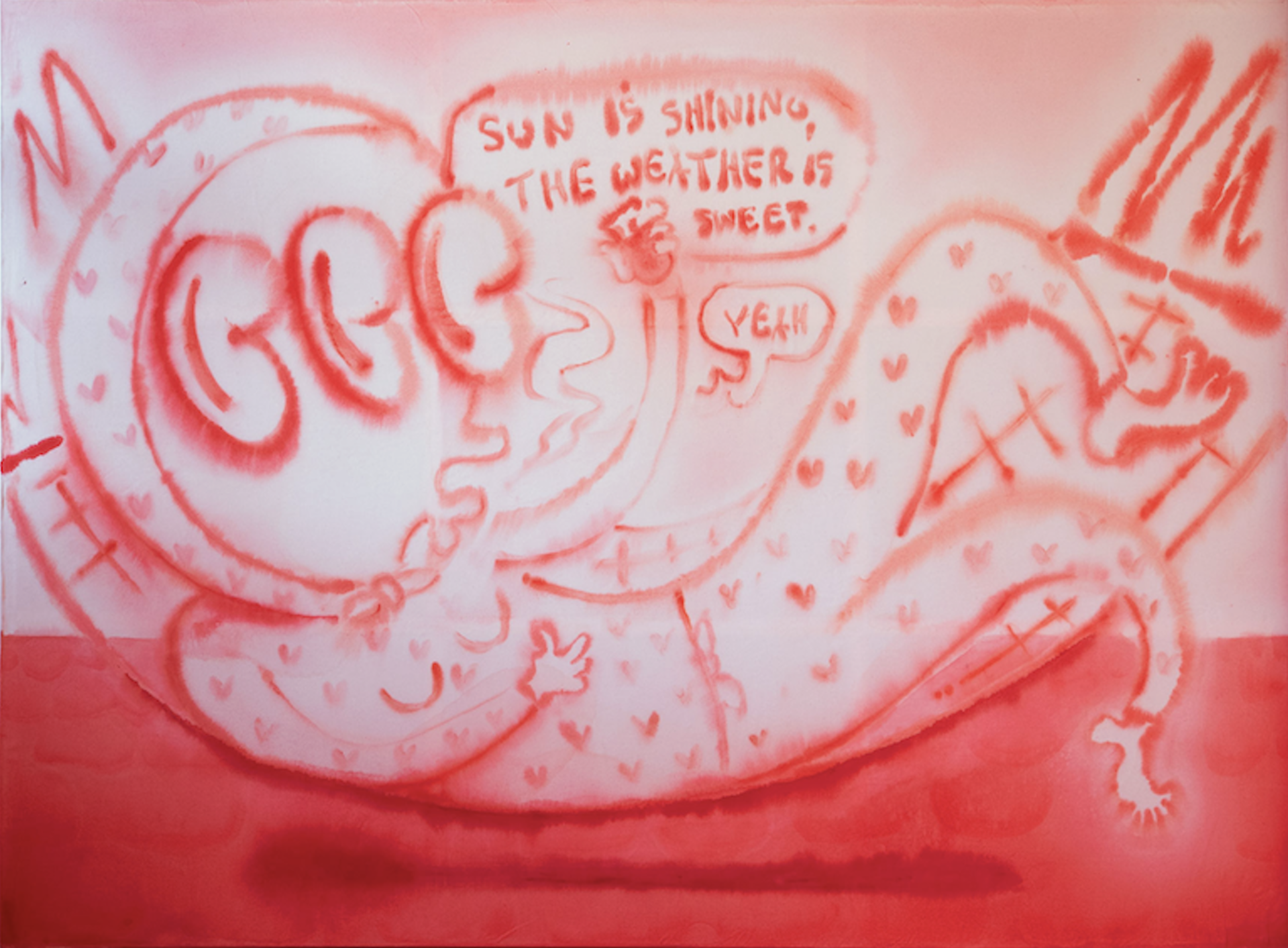


Location
Kunstverein FriedrichshafenDate
16.12 –27.02.2021Curator
Hannah EcksteinPhotography
Frank Kleinbach (exhibition views), Jens Gerber (single works)Subheadline
In order to make art experienceable beyond the digital space during the temporary closure of our doors, the artist duo Mehmet and Kazim Akal has, with Le Peep-Show, conceived an exhibition, which at least and in any case can be seen through the window front of the Kunstverein Friedrichshafen.Text
In their usual manner Mehmet and Kazim also expand for "Le Peep-Show" the conventional concept of painting by letting their pictures work their way out of the two-dimensional surface into the space, creating backdrop-like tableaus, which whisk the viewer away into their red and white world.
This world is closely linked to the personalities of both artists and the numerous similarities in their biographies. Starting with the fact that they are cousins and share the surname Akal, which means white-red in Turkish. This meaning was reason enough to consistently limit the palette of all their works up to date to solely these two colours. The artistic staging of their family alliance takes place through their alter egos, the "Kissing Cousins", who constantly reappear in their works. They can show up painted in oil on canvas, as animated plasticine figures in video works, or in the shape of Mehmet and Kazim themselves, dressed in red Adidas tracksuits and Superstars sneakers.
The fact that their artistic background is rooted in Hip Hop, Breakdance and Graffiti is shown by the formal appearance of the recurring image staff as well as by quotations from song lyrics and various symbols, which moreover point to the influence of comics. And then, of course, there is perhaps the most important similarity of all: Both are children of Turkish guest workers, what resonates humorously as a given reality in the sub-context of their works and in the overall staging of the "Kissing Cousins". The influence of numerous art historical role models shouldn’t be underestimated as well. Above all Philip Guston, but also André Butzer, Martin Kippenberger, Markus Oehlen and Albert Oehlen as well as Peter Saul.
In "Le Peep-Show", Mehmet and Kazim show a selection from their series "Finest Artist Watercolours" (2020), which was initially created on paper during a holiday at the Turkish Aegean. In recent months the series has been expanded to include large-format works in oil on canvas. Installed from the floor to the ceiling, a comic-like panorama spreads out but does not tell a linear story. The individual paintings rather represent symbols, which can be interpreted differently depending on the recipient and his personal experiences.
The title "Finest Artist Watercolours" already indicates that the art of the painter duo isn’t thematically exhausted in their own biographies. The art world and its immanent structures and codes are scrutinised with perpetual humour as well. The title of the series, for example, could have been taken from the newsletter of a gallery which offers "finest artist watercolours" for sale. The seriousness of the economic and commercial aspect of the art business is thus repeatedly ironically broken by the two Akal boys.
Similarly the works "Self-Portrait #4" (2020) and "Two Savages on The High Steed #2" (2020) make use of classical art historical motifs. Instead of a face, however, "Self-Portrait #4" shows a stylised bottom. "Two Savages on the High Steed #2" breaks with historical equestrian imagery in a way that the horse looks anything but stately and is more reminiscent of Lucky Luke’s horse Jolly Jumper. The title "Two Savages on the High Steed #2" also suggests that the high steed is a personification of the Fine Arts and so the biographies of the two painters mix with the conventions of the art world – already during their time as students at the Munich Art Academy, they had to realize that the artistic value of graffiti is rated rather low within the realm of the Fine Arts.
The fact that humour and irony are used as stylistic devices by Mehmet and Kazim becomes clear, when they portray themselves in "Meanwhile at the Beach" (2020) standing in the sea with ottoman Fezs on their heads. It is important to know that in the Ottoman Empire, the Fez was introduced as part of a reform in the 19th century. This reform was intended to counter the traditional turban with a dress code oriented towards the West. Today, the Fez is probably the symbol par excellence for the Ottoman Empire and Orientalism like no other garment, so that – ironically enough – intention and effect have been reversed in the course of history. The work also shows that Mehmet and Kazim don’t confront prejudices and clichés about themselves or their identity as German-Turks with a moralising finger, but that they expose them with a kissing mouth and mischievous wit for what they are - nothing more than outdated stereotypes.
In addition to the rich content of their works the duo keeps on examining purely painterly questions and so the medium is continuously put to the test and expanded in all directions. Sometimes, as in "Le Peep-Show", through extensive spatial installations, other times through wall paintings, projections or animated virtual reality video works. A great keenness for experimentation can also be seen in the use of different styles and materials. In some series the motifs are collaged with fabrics onto the canvases, while in the Finest Artist Watercolours the impasto, graphic-like colour application of earlier paintings is contrasted with a gossamer, extremely painterly style. In these ways Mehmet and Kazim Akal investigate the nature of painting again and again and at the same time dare to look at the bigger picture from their very own perspectives.
The Kunstverein Friedrichshafen is pleased to present with "Le Peep-Show" the first institutional solo exhibition of Mehmet and Kazim Akal.
Hannah Eckstein